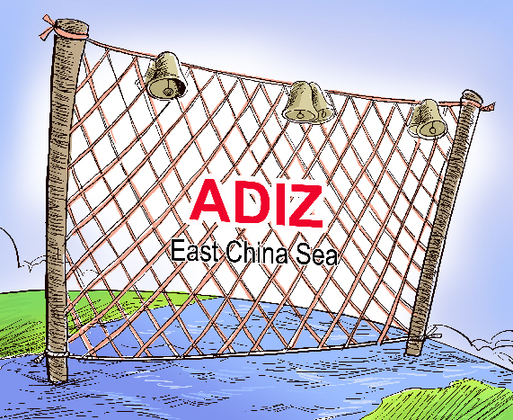Air defense zone is a firewall and buffer
- By Luo Yuan
 0 Comment(s)
0 Comment(s) Print
Print E-mail China.org.cn, November 27, 2013
E-mail China.org.cn, November 27, 2013
China's Ministry of Defense on Saturday announced the establishment of East China SeaAir Defense Identification Zone (ADIZ), a practice that is backed by international laws and is not the first of its kind.
|
|
|
A firewall [By Gou Ben/China.org.cn] |
China's territory, including its land, domestic waters, territorial seas and airspace, are sacred and inviolable. China will step up its defense of its borders, coasts and airspace, and will take effective defensive and administrative measures to guard the security of its territory, while preserving its maritime interest. This is the legitimate right and commitment of the People's Liberation Army, endowed by Chinese laws.
More than 20 countries have set up ADIZs, including the United States and Japan, which both did so as early as the 1950s-1960s. The U.S.' air defense zone goes beyond the American border, while Japan's zone extends to within 130 km of China. So, why shouldn't China establish its own firewall at its doorstep?
|
Don't miss: |
|
|
|
Tao Duanfang: Accusations about China's air defense zone unjustified |
Setting up an ADIZ helps to prevent risks, a basic rule to clarify one's own margin of interest. The zone tells others which areas allow free access and which require prior approval. It is a reminder to rash intruders.
This is why setting up an ADIZ is not to intensify conflicts but to simplify difficult problems and clarify a vague boundary, since it will reduce the possibility of misjudgment and accidental injury. It is a buffer to prevent accidents from happening.
The establishment of East China Sea Air Defense Identification Zone has been a forced act. Earlier, Japan threatened to fire warning shots in its own ADIZ and shoot down unmanned aerial vehicles (UAV) entering its airspace (including China's Diaoyu Islands). Japan also deployed surface-to-ship missiles near the Miyako Strait, a channel on the passage of PLA naval vessels to the west Pacific. Japan frequently sends planes to interfere with China's military and coastguard aerial patrols.
In the second quarter of this year alone, Japan's F-15J fighter jets scrambled 69 times compared with 15 times during the same period last year. Recently, Japan even sent naval ships to monitor PLA navy exercises.









Go to Forum >>0 Comment(s)